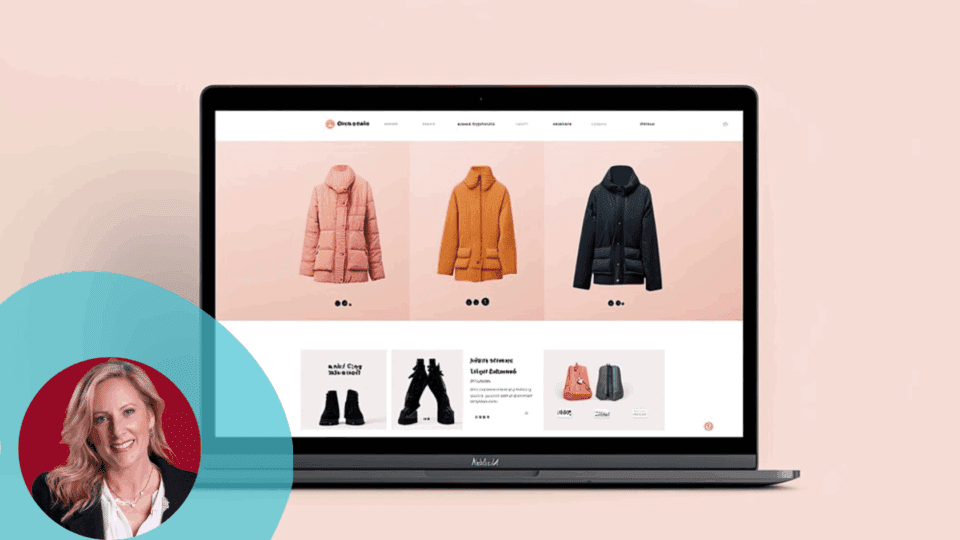In today’s retail landscape, where ad budgets are ballooning and shopper attention is shrinking, the product detail page (PDP) has emerged as the most important real estate on a brand’s website. Once considered a mid-funnel touch point, the PDP is now where many shoppers begin — and often end — their journey. The problem? They’re bouncing, not buying.
According to the 2025 Contentsquare Digital Experience Benchmark Report, online conversion rates have declined 6.1%, while the cost of each site visit has jumped 9%. For retail leaders, this signals a clear call to action: It’s time to stop thinking of the homepage as the digital front door. The PDP is where the fight for customer conversion is happening.
Why More Shoppers are Landing on PDPs
The simple truth is that more and more traffic to retail sites originates from search, social media and digital. Paid sources deliver 39% of all traffic to digital sites— and PDPs are the most popular landing page, up 3% year-over-year (Contentsquare, 2025).
It used to be that a shopper would visit your homepage, browse categories and eventually land on a PDP. Now, they Google “little black dress” or “yellow sundress” and jump straight to a single product page. Or they see a TikTok about your skincare serum and swipe up to buy. Either way, the journey starts at the PDP — and the clock starts ticking the moment they arrive.
This means the PDP isn’t just part of the experience — it is the experience. It has to capture attention fast, answer questions instantly and give shoppers a reason to click “add to cart.”
But too often, PDPs are cluttered, confusing or just not helpful enough. Across all page types, PDPs have the highest bounce rate — by far. They contribute twice as many bounce visits as product listing pages and 4X as many as the home page (Contentsquare, 2025).
4 Quick Fixes for Your PDP
While the homepage is built to engage and inspire, the PDP has a different role. Shoppers arriving here know what they are looking for, so relevance and accuracy are everything. On mobile — where more and more shopping happens — this is even more important. If a shopper can’t quickly tell whether the product is right for them, they bounce.
The PDP needs to be polished, fast and conversion-focused. Here’s what to focus on:
1. Bring key info above the fold.
When shoppers land on a PDP, they’re usually looking for something specific. But instead of finding clear, helpful product information, they get hit with low-quality photos, reviews buried at the bottom or important specs hidden below the fold. Make it easy for shoppers to get the basics — price, size, availability, delivery, reviews — without scrolling. This saves them time and builds trust instantly.
2. Use social proof to build confidence.
By showcasing what other customers are looking at and buying — underneath or right over the hero image — you can improve shopper confidence and tap into shoppers’ fear of missing out (FOMO). Social proof aggregates shopping and browsing behavior in real time and can come in many forms, including bestseller, trending and popularity messaging like “selling fast” or “X sold in the last 24 hours.” Having this kind of social proof on the PDP helps customers engage with the product, building confidence and combatting indecision. Also, making the message balloons clickable helps them remain on site longer and discover new and additional products.
3. Write product descriptions for real people.
Ditch the generic copy. Use search-friendly language that matches what your shoppers are actually looking for. Use attribute messaging to highlight important product attributes like “lightweight” or “waterproof” instead of just “men’s jacket” to capture shoppers’ attention and keep them on the site longer.
Complement product copy by adding UGC (user-generated content) on the PDP. Showing real people using your product helps build authenticity and increases trust. UGC can take different forms, such as images pulled from social media, reviews with photos and videos, and user-generated Q&A.
4. Don’t overwhelm shoppers.
Less is more. Avoid alienating the shopper with too many buttons or pop-ups. Keep the design clean, intuitive and focused on the purchase path. It’s also important to highlight what matters most for shoppers. If your shoppers care about sustainability, fabric or fit, make sure those details are easy to find. Tailor content to what actually drives decisions for your audience.
AI innovations are making it easier than ever to surface and deliver the right message, or combination of messages, at the right time in the customer buying journey. AI also can automatically analyze product feeds and spotlight compelling features that are proven to drive conversion — all with little to no effort from merchandising teams.
5. Test, test, test.
Above all, test, test, test. Keep optimizing your UX and see what works and converts using A/B testing.
Bottom Line: Every PDP Visit Counts
When the PDP is the first — and sometimes only — impression, it has to work hard. That means making it easy for shoppers to get what they need, fast. If your PDP isn’t doing that, you’re wasting valuable traffic and leaving conversions on the table.
So treat your PDP like the star it is. Invest in smart design, clear content and trust-building tools like social proof, reviews and urgency messaging. Because if shoppers bounce, it’s not just a missed sale — it’s a missed opportunity to grow loyalty and revenue.
Marjorie Leonidas is the CEO of Taggstar and has been at the helm of the company since 2014, with a dedicated goal of bringing the power of conversion messaging to leading retailers and brands. She is a digital veteran, having helped BT launch its WiFi business globally as well as playing a key role in the digitization of the London 2012 Olympic Games. Before that, she founded sourcing agency Indigo in Hong Kong, manufacturing for major brands in the Far East and from that experience championed the importance of sustainability with factories she worked with.




